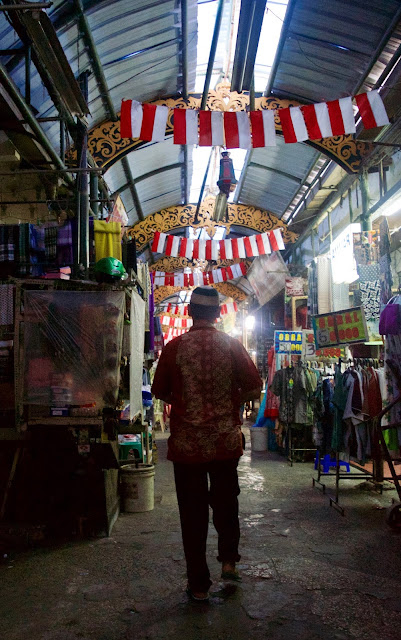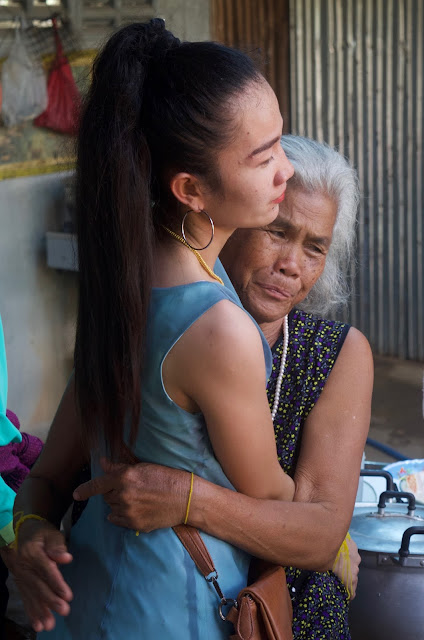Indonesia is the most populous Muslim country, so the culture is rich in both Middle Eastern and Indonesian influence. The old quarter is a section with narrow streets, traditional wooden shop fronts with open windows. People walk through the streets, dodging "becaks," (pronounced "bee-szak") pedaled and motorized rickshaws. Autos, motorcycles and small vans also squeeze through the alleyways, so one must remain vigilant, although drivers are very courteous.
Following are photos with captions of my walk through the souk and around the mosque. It was a holiday, so the mosque was overflowing and I was unable to ascend the tower for a view of the city. Nonetheless, I encountered many friendly people and curious children, as well as some (adults) who displayed obvious suspicion about my presence. I couldn't blame them for those feelings toward a lone westerner with a camera who entered their holy place, so I kept a low profile (tried to) and spent a minimum of time at the mosque.
As I reflect on the recent terrorist attacks there, I am saddened that there can be so much hatred in evil people who live among such friendly residents.
All photos are © by the author and may not be used without permission. If interested in using any of the images for non-commercial use, please contact me at stilesphoto@yahoo.com.
 |
| Typical scene inside the souk. The small flags overhead are those of Indonesia. |
 |
| This woman was cutting and selling fruit. |
 |
| A small side street as seen from the souk. |
 |
| At the end of the souk is a street that runs alongside the mosque. Many people were headed toward the mosque. |
 |
| A wash station near the mosque. |
 |
| Children were curious and friendly. The boys in center are members of a scout organization. |
 |
| Friendly young men socializing near the mosque. They asked me to take their picture. |
 |
| More young boys relaxing near the mosque. |
 |
| These men were sitting on the steps of the mosque because it was full inside, so they were listening to the worship service via loudspeakers. |
 |
| Going back through the souk, I met many who were still en route to the mosque. |
 |
| I saw only men at the mosque. Many women were shopping in the souk. |
 |
| The same woman seen before, still slicing fruit. |
 |
| Oil shop. I do not know what kind of oils they were: the owner had stepped out. I assume they were essential oils. |
 |
| A colorful stall near the entrance to the souk. |
 |
| Outside, the sun was intense (Surabaya is very near the equator). Many small shops were open. |
 |
| Keeping covered in the hot sun. The shops were old, with wooden doors and window shutters. |
 |
| Motorized "becak" for hire. Passengers sit in front, facing traffic, opposite of Thailand's "tuk tuks" and "samlors" (pedicabs). |
 |
| The driver of a pedal becak awaits customers. |
 |
| Commerce moves down the street that passes the souk, here in a pedaled wagon piled high with what I assume are dyed dried leaves for weaving baskets. |
 |
| Lending a hand to help an elderly passenger disembark from a becak. |
 |
| At the entrance to the souk, traffic slows in the narrow street due to the number of becaks that are parked there. |
It is easy for the visitor to become enveloped by the modern commercial districts in large cities. Fortunately, there are almost always districts that retain traditional architecture and businesses that reflect the history of the area. If you visit Surabaya, be sure to head to Ampel Mosque. And while there, pick me up some of that fragrance "For Men." I regret not buying some. Thank you.






























